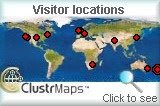 I
If you have already bought a laptop, then you are likely to be committed to making the most of it. If you have not yet bought it and are wondering what to buy, then take this tip born of 30 years' experience of working in IT and 17 years' experience of using laptops as my main/only productivity tool:
Now I know that people could object to such a bald statement - so, why Toshiba? Well, it is because, after trying out or using Toshiba, Dell, Fujitsu, HP, NEC, ASUS, IBM, etc., I have been forced to acknowledge that Toshiba corporation are
consistent. Their three most important consistencies are:
- They consistently conform to relatively high production quality standards.
- They have consistently been shown to be leaders in laptop technology (along with NEC) - i.e., always being farsighted in implementing features that other manufacturers only belatedly follow.
- They have consistently implemented good ergonomics in their laptop design - including especially: large/full-size keys designed to assist touch-typing; keyboards with good feel and bio-feedback; good and consistent keyboard layout (the Del, Alt and pagination keys are usually in the same/similar locations on all models); good ergonomics in the screen design; solid construction (so they can put up with everyday knocks).
These are the most important simply because, if:
(a) you are likely to be spending a lot of time with your laptop and
(b) if it does not enable you to achieve optimal efficiency, effectiveness and productivity when it is being used as a working tool,
- then you will probably inevitably find that it is forcing you to waste time.

 I have just installed a nifty free graphics tool on this site called "ClustrMaps" from clustrmaps.com. It shows a small map of the world and indicates - by means of clusters of red dots - where "hits" on the blog site are emanating from around the world.
I have just installed a nifty free graphics tool on this site called "ClustrMaps" from clustrmaps.com. It shows a small map of the world and indicates - by means of clusters of red dots - where "hits" on the blog site are emanating from around the world.

